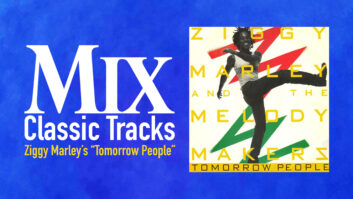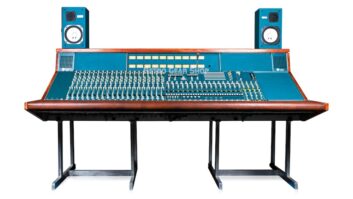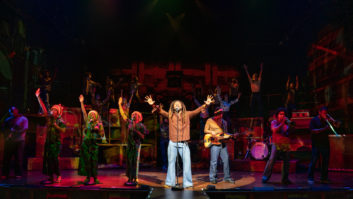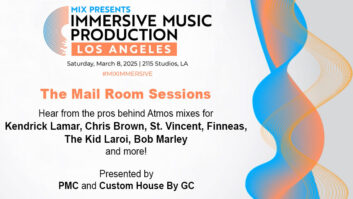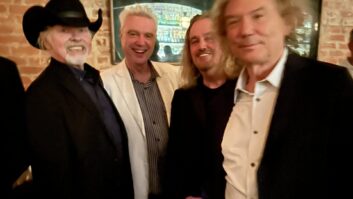During his lifetime, Bob Marley was the undisputed King of Reggae, selling millions of records and becoming one of the most recognized musicians in the world, up there with Madonna and Michael Jackson — a true icon. His magnetic personality, emotive voice, solid songwriting, and universally appealing anthems of peace, love, solidarity and fighting oppression made him a hero on every continent. Incredibly, his popularity and his legacy have only grown since his untimely death from cancer in 1981 at the age of 37.
The Marley estate — spearheaded by Bob’s widow Rita (herself a talented singer) — and his record label, Island/Tuff Gong, have managed to keep a fairly steady stream of material coming out over the two decades since his passing. Two hits collections — Legend and One Love — have sold many millions, and now Island has embarked on an ambitious program of “Deluxe Edition” CDs, featuring remastered versions of Marley’s albums with bonus tracks. It was somewhat surprising, however, that precious little live material from this incendiary performer has come out through the years.
That is about to change. For the past several months, a team has been working to archive, clean up and mix a huge cache of Bob Marley live tapes from the 1970s, with an eye toward releasing many of them to the public, either as bonus tracks on remastered studio albums, or as live CDs unto themselves. “Bill Levinson is the producer of this project,” notes Jeff Glixman, director of studio operations for Universal Music Group, the parent company of Island Records (and a zillion other labels). “Bill has been heavily involved with the Marley family for quite some time. He’s in the process of remastering and re-releasing 15 Marley albums. But he’s also been aware of these tapes of previously unreleased live shows, so we’ve been tracking them down. Some of them are in Jamaica, and some of them are in England. We’ve worked on the ones in England; they were assembled with the help of our library team there. And we have a studio facility there and they did a lot of the cleaning up and restoring of these tapes. A lot of them had to be baked, and a lot of them were in the condition where if you got one good play, you were lucky and you were satisfied.”
“In doing some research,” adds Bill Levinson, who’s known industrywide for his fine reissue projects, “we discovered that there was an assortment of tapes from November ’73, done live at Leeds [Polytechnic College in England]; there’s live at the Lyceum, July ’75, which yielded the Live album — two shows were recorded for that, but not all the songs were used. There are five shows from June ’76 at Hammersmith Odeon [in London]. There’s live at Manchester, England, June ’76. There’s one that was done July ’76 live at the Roxy in Los Angeles. There are four shows at the Rainbow in London, June ’77, and three shows in Paris in ’78, which yielded most of the Babylon by Bus album. And there’s live in Boston, June ’78. We know we have these tapes. The trick is to get to London, get to Jamaica, copy them and collate them so we have a full set in both locations. That’s the first chore, which is actually harder than it sounds because you’re dealing with different file systems and locations. Once that’s done, I can work wherever I need to go — get a team together and start mixing these for review and, ultimately, release.”
The tapes are mostly 16- and 24-tracks, “but there’s also a whole slew of 2-tracks,” Glixman says. “Some were on BASF tape, some was Ampex, some was Scotch.” To archive the tapes, Glixman chose the Euphonix R-1 with the optional AES 31 TransferStation, digitizing at the high-resolution 24-bit, 96 kHz, and backing up on both DLT and ExoByte. Martin Kloiber of Euphonix was the technical lead at Battery Studios in London, and notes, “We played around with different sample rates — there was the question of doing it at 192k and I think that’s nice, but at the end of the day, you don’t gain that much sound quality. Maybe if you have a microphone going directly into the machine you might, but when you’re coming over from analog tape, you don’t gain much. So I think this was plenty.” Another critical member of the setup team from Euphonix in England was artist relations contact Steve Smith.
“The library team and Bill had logged the tapes we were going to use, so I had files on the tapes and I actually had Xerox copies of the tape boxes, so I knew what I was looking for,” Glixman says. “There was very little information on the boxes, but I tell you, I’m a record producer by nature. I started when I was very young, had some early success with Kansas [including “Dust in the Wind”] and today you lose track of just how good the technique was back then. Forget the physical condition of the tapes as they exist now. The actual performances of the band and the quality of the recordings done by the engineers in the Island Remote Truck was just fantastic. So the tapes sounded great! Then it was a matter of getting the analog machine calibrated as well as possible, restoring the tapes and making the transfer. Of course, I was doing some mixing as it went by because there was a nice SSL G Plus in the studio there. The rough mixes I have from the Hammersmith Odeon are just spectacular! Mixing that performance was really one of the great moments in my career.”
The physical condition of the tapes varied widely; some were strictly one-pass jobs and even required cleaning the heads at regular intervals because there was so much shedding. “On one show, there was a long encore with medleys and segues where I couldn’t make the whole tape in a single pass, but I could back up and then cut it together in the Euphonix format. It’s so simple: Let’s say we ran eight minutes of the tape, and at that point there was too much oxide that was bleeding off, due to the condition of the adhesive. At that point, I’d just stop, clean the machine, back up to, say, 7:30, so I had a little bit of overlap, and then I let it run for another five minutes and edited it later; it was very easy.
“So what I have for Bill is the 96k, 24-bit archives in our vault, still in the multitrack format, plus I provided him with rough mixes on CD for easy reference.
“They also found four reels of tape that were logged as multitrack 2-inch tape, and when I actually got my hands on them, they ended up being 2-inch videotape masters of some shows.”
Not surprisingly, there is talk of also putting out one or more DVD releases down the line. And producer Levinson says he’d like to investigate the possibility of re-releasing the mid-’70s Live album in surround. “Twelve songs were recorded but only seven tracks were used and they all came from one night, and a couple were edited. I think we could do a 12-track record, with unedited versions, in surround and really replicate the room sound, because the crowds really got into it, as you know. That could be a lot of fun. That’s a classic album that could be even better. I’m sure we’ll be doing some experimenting with both the SACD and DVD-A formats.” Levinson says he’d also like to re-visit the later Babylon by Bus tapes, which he considers a bit too “wet.” “I think that was more about the mix than the venue. I think it could be presented in a more honest setting.”
It’s still too early in the process to know exactly what the eventual fate of the tapes will be, but Levinson suggests, “It could be we’ll put together a thematic series, where each release would be focused on one venue. It could also be bonus material for deluxe editions; for instance, we’re starting to think that Rastaman Vibration deserves a deluxe treatment, with the second disc being the Roxy album. It’s funny — I usually know what to do and how to get there, but in this case, we’re just going to let the tapes talk to us, as they turn up, and depending upon the performance and the shape they’re in, tell us how they want to be presented.”
There’s a chance that the first batch of material might be out before Christmas this year, but don’t hold your breath: Levinson points out that he has three more remasters already awaiting release — Talkin’ Blues, Natural Mystic and Rebel Music — “and that’s a lot of Marley for a year.”
Still, it’s nice to know that the tapes are now archived and together and at the very least in line for release. Stay tuned. And by all means, “lively up yourself!”
